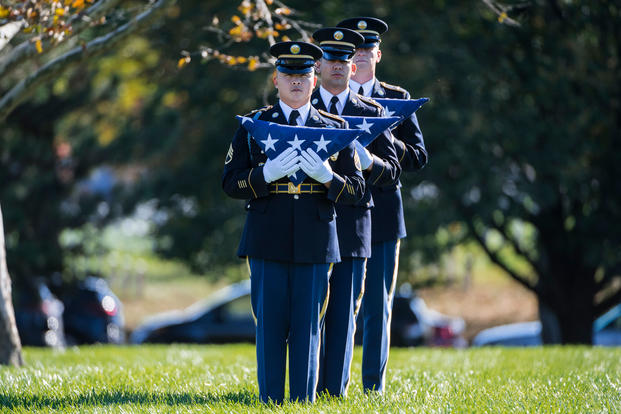A long-decried law dubbed the “widow's tax” that reduced the amount of cash support some surviving military spouses could receive each month will begin a planned phaseout this month, a change triggered by a 2020 law.
The so-called tax, officially known as the Survivor Benefit Plan offset, impacted surviving spouses who qualified for both SBP annuity payments and Dependency and Indemnity Compensation (DIC) allowances from the Department of Veterans Affairs. The law required the SBP payments to be reduced by the amount of the DIC payments. That’s because federal law prevented "double-dipping," or receiving two separate federal benefits for the same reason.
SBP is an annuity paid to the surviving spouse of a deceased retired veteran; the monthly payment is a percentage of the vet's retirement pay. DIC is a VA benefit paid to the surviving spouse of a veteran who died on active duty or from injuries or illnesses that were a result of military service.
After long and loud public outcry, Congress finally decided that DIC and SBP are two separate benefits, allowing surviving spouses to receive them simultaneously.
To accomplish this the government came up with their usual very complicated solution. They introduced the Special Survivor Indemnity Allowance (SSIA) which is a monthly payment of $327 to partially make up for the SBP/DIC offset.
Beginning this year there will also be an extra monthly payment which is one-third of the normal DIC payment. For 2021 this amount will be one-third of the $1,357.66 DIC monthly payment; or $452.55 each month. It will increase to around $905 in 2022 and further increase to the full DIC amount in 2023.
This means that the SBP/DIC offset will totally disappear in 2023.
See: 2021 Retiree and Survivor Pay Dates
Not every surviving spouse who receives SBP payments will see the larger payments. Only those who also receive DIC benefits from the VA are eligible for the increase, that is less than one-third of all SBP recipients. Also, the amount of a surviving spouse's SBP payments, and the presence of dependent children may make a difference in the offset amount. This is why DFAS is sending all affected surviving spouses personalized letters explaining their new payment amounts. The military estimates there are 65,000 people who will be affected by this change.
Those eligible for the increased payments should have received notification from the Defense Finance and Accounting Service, or DFAS, in December 2020, explaining how much their new monthly payments will be, If you didn't receive a letter, you most likely aren't eligible for the increased payment. You should verify your address with DFAS if you believe you should have received notification.
DFAS has created a Survivor's Newsletter that explains the details of SBP offset, as well as other benefits for which survivors may be eligible. The newsletter also has information on how to contact the finance service if you have questions or concerns about your individual payments.
Keep Up With Military Pay Updates
Military pay benefits are constantly changing. Make sure you're up-to-date with everything you've earned. Subscribe to Military.com to receive updates on all of your military pay and benefits, delivered directly to your inbox.













